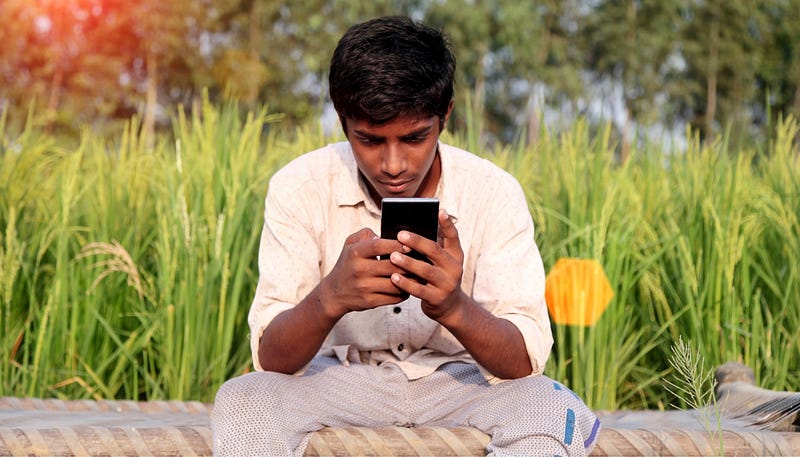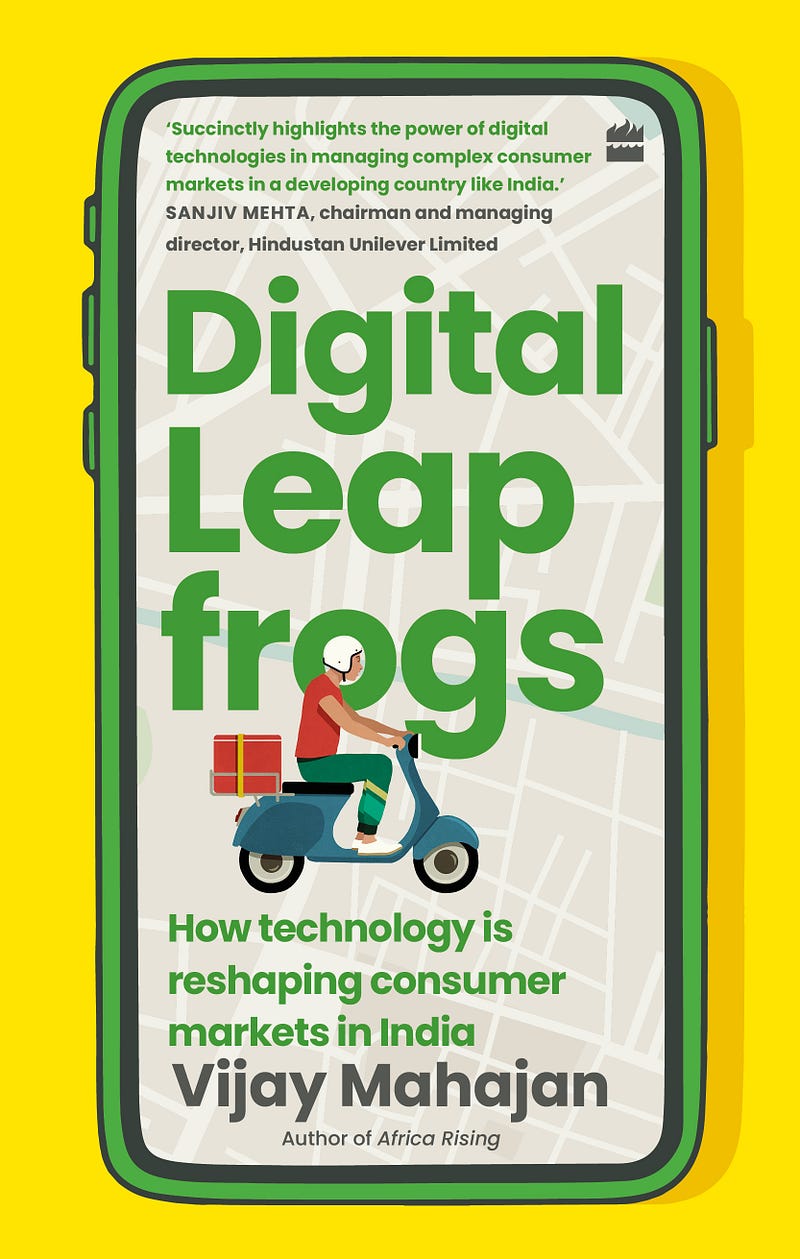Digital Tech Helps Nations Leapfrog Development
Digital technologies are helping India and Kenya find 21st century solutions to 19th century problems
Based on the research of Vijay Mahajan

When Vijay Mahajan was growing up in Jammu, India, getting a new telephone was a big event. If one household got one, neighbors lined up to use it.
Landlines were scarce in rural India, says the Texas McCombs marketing professor and John P. Harbin Centennial Chair in Business. Today, however, inexpensive mobile phones are transforming remote villages and farms by connecting them to the world economy.
It’s a pattern Mahajan calls “digital leapfrogging.” In a new book, “Digital Leapfrogs,” he describes how digital technologies are helping India and Kenya skip traditional economic development steps such as telephone lines. Both are extending digital development to large rural populations, porting them straight from the 19th century into the 21st.
Theirs is a different model from countries such as the U.S., he argues. It could be a more practical model for the 86% of the world’s consumers who live in developing countries.
How did the idea for this book first come to you?
Back in 2000, I went back to India as first academic dean of the Indian School of Business. My daughter came to visit, and she asked me, “Dad, every day I see these ladies working in the school’s yard. If they have to go to the toilet, where do they go?”
We found out they would go behind the trees.
We had the best architects from the U.S. and India, but this facility was not really designed for India, because we had forgotten the most important people here, coming in to work from the neighboring villages.
I said to myself, “I do not understand this country at all.” That’s when I started thinking about this book.

It sounds like the toilets inside the buildings were hard for those workers to access. Did they finally get their own toilets?
Yes, we built them close to the academic buildings, and I wanted them to be exactly like all the other toilets on this campus.
What did the experience teach you about development in India?
This country is really navigating across two different centuries. In percentage of rural population, India is where the United States used to be in 1880.
The United States solved the toilet problem, and problems like running water and electricity, a long time ago. In India, we were creating a digital library at the same time we were solving the toilet problem.
How do technologies help bridge such divides?
One way is access to education, especially for the middle class and the lower middle class, because they want their children to do better. This company called Byju’s came up with the idea of offering tutorials on the mobile phone on several subjects. It picks the best teachers in the country, and they can make some more money helping develop the classes.
Another way is by democratizing the system for people who live in rural areas, who make up 66% of India. Some of them have started their own YouTube channels for cooking or cosmetics. One woman started a channel on how to take care of your skin with local herbal products. Google pays her depending upon how many people are watching.
How did she learn to set up a YouTube channel in the first place?
Google has a program called Internet Saathi or “friend.” They hire women to go from village to village, and they’re teaching groups of women how to access Google, because once they access Google, the whole world is in front of them.
Is digital tutoring a key element of leapfrogging?
Part of developing markets is teaching people how to use the technology. In Kenya, where most of the Uber drivers in Nairobi come from rural areas, I saw one room where Uber was interviewing people. In a second room, they were teaching them how to use a smartphone. In a third room, they were teaching them about banking, because many of these people didn’t have a bank account to transfer money to.
These digital companies have pulled in people who otherwise could not find a job, and they’re giving them a job, and now they have a bank account. And many of them are transferring money back to their villages.
So, the company was creating financial consumers as well as drivers.
Uber even gave them an opportunity to buy a car. These drivers had no credit history, but they had the ratings they got from passengers. Uber started using those ratings as an indicator of how reliable this person was. A local bank would give the loan if a person has very high ratings from customers.
I asked the bank, “What was the default rate?” They said the default rate was not any different from people who had a credit history.

It seems like another crucial factor in digital leapfrogging is the smartphone.
None of this would have been possible without the Jio [an inexpensive mobile phone]. The richest man in India spent several billion to create the infrastructure. Then he started manufacturing phones, and phone prices overall started going down. Then the data started becoming cheaper and cheaper, and platforms like YouTube could provide content.
What lessons do India and Kenya hold for other developing countries?
How do you integrate rural economies, which a lot of these developing countries have, into the urban upper- and middle-class economies? Digital technologies offer a way to integrate them.
They create inclusion irrespective of who you are and where you live. You improve the lives of common people because you make it possible for a common person to be connected.
To learn more, read about the book’s launch in the press release from Texas McCombs.
Story by Steve Brooks
About this Post
Share:


